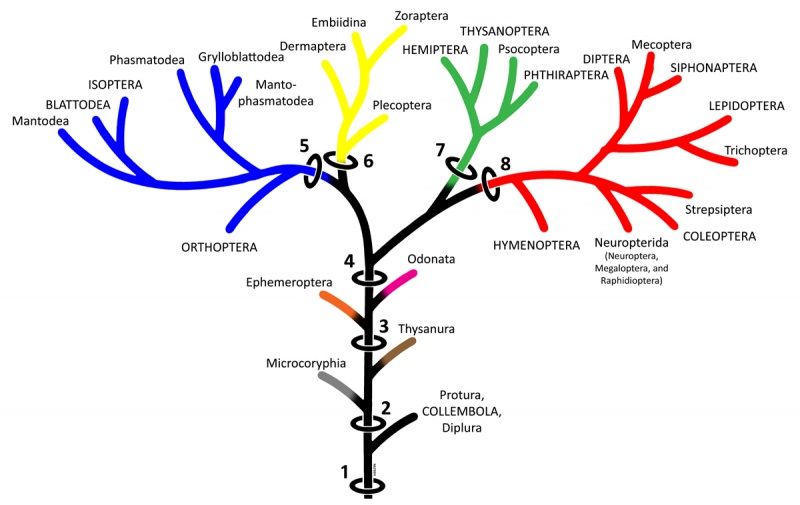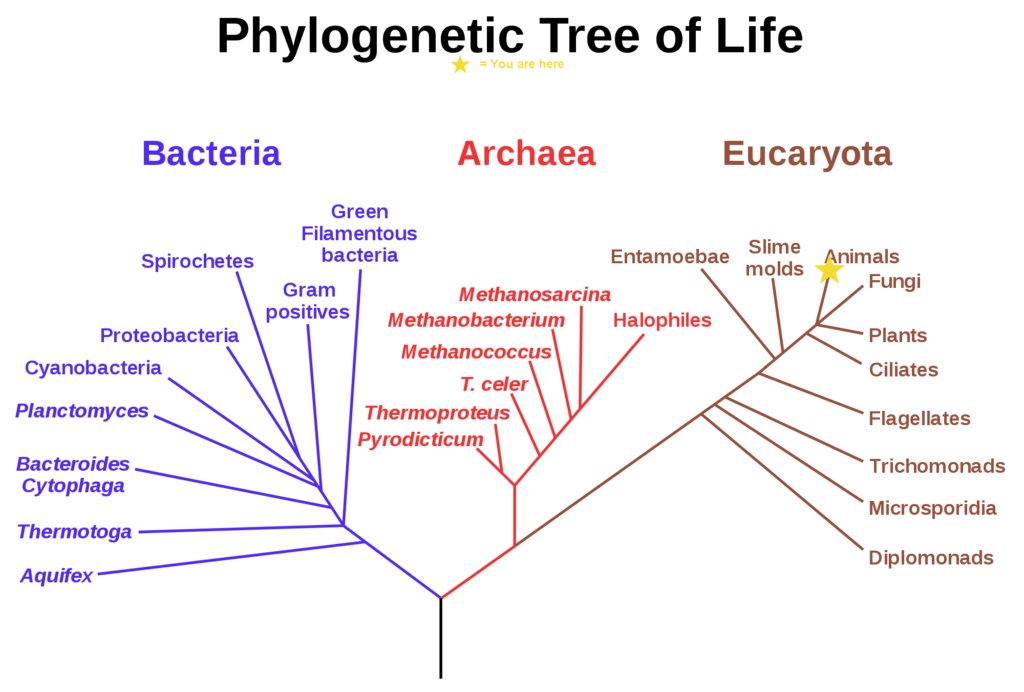Classification
Domain- Eukarya
The L. obliqua is in the domain eukarya because it has as
endomembrane system including the endoplasmic reticulum, Golgi
apparatus, vacuoles, and nucleus.
Kingdom- Animalia
The L. obliqua is a part of the kingdom Animalia because it is multicellular
and obtain energy from other organisms.
Figure 1. This phylogenetic tree represents where the L. obliqua belongs in retrospect to the domain and kingdom it belongs to. The caterpillar belongs to the kingdom Animalia which come off of the branch eukaryotes and you can clearly see it represented in this tree.
Phylum- Arthropoda
The L. obliqua is a part of the phylum arthropoda because it has bilateral
symmetry and their bodies are made up from segmented parts and usually have
appendages that are joined at most of the body segments. Also their bodies
are protected by an exoskeleton and undergo ecdysis (molting).
Class- Insecta
The L. obliqua is a part of the class insecta because it has three pairs of
legs, a segmented body consisting of a head, thorax, and abdomen as well as
one pair of antennae.
Order- Lepidoptera
The L. obliqua is part of the order Lepidoptera because it is in
classification of either a moth or a butterfly. It is characterized by its
membranous wings, and going through metamorphosis going through several
different life forms.

Figure 2. This phylogentic tree shows the evolution of the insect orders. The order Lepidoptera to which the L. obliqua belongs to is under the red branch of the tree.
Family- Saturniidae
The L. obliqua is part of the family saturniidae because it is a moth. The
family separates moths and butterflies. They all contain characteristics of
large heavy bodies covered in hair like scales, lobed wings, reduced
mouthparts, and a large head.
Genus- Lonomia
L. obliqua is part of the genus Lonomia because it has a venomous
caterpillar. The genus Lonomia all live in South America with highly
venomous caterpillars.
Species- Lonomia obliqua
Next we will move on to the habitat and interations!
If you want more details on the taxonomy of this species or others, check out this website: http://eol.org/pages/395470/names.
